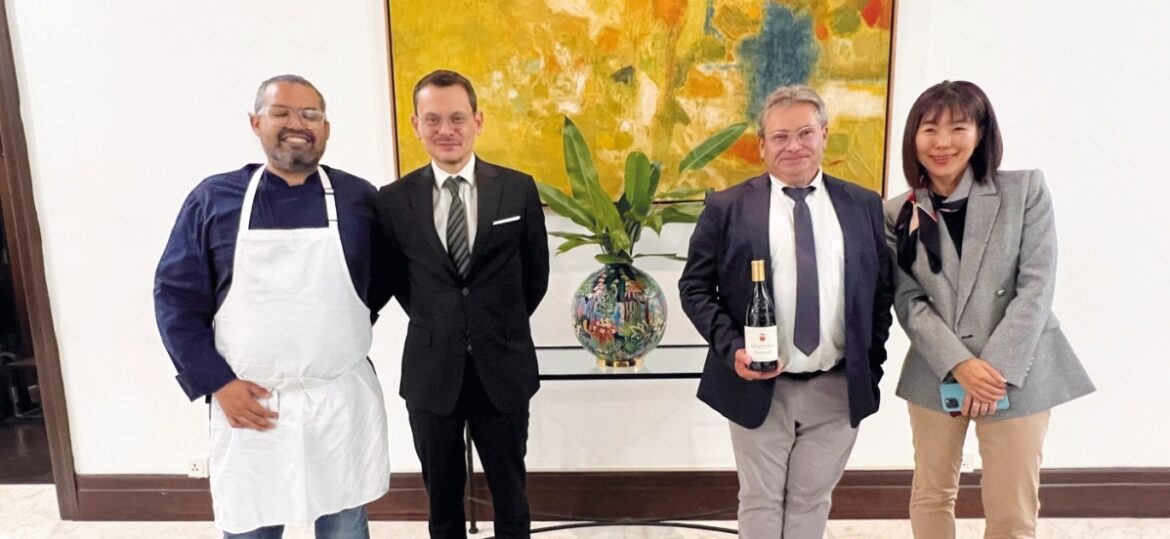It is funny when you hear Châteauneuf-du-Pape and Gigondas being referred to as “siblings”. Yes, the two wines hail from the southern Rhône region of France and both appellations favour blending the classic trifecta of GSM (Grenache, Syrah and Mourvèdre) grapes, but that is pretty much it. Located about 25km apart, Gigondas used to be unfavourably nicknamed “the poor man’s Châteauneuf-du-Pape” but it is fast becoming the preferred, more “with it” tipple, beloved by both the cool kids as well as the cognoscenti. And why not?
With 2025 serving up large doses of uncertainty — from geopolitical tensions to the introduction of new tariff policies that triggered widespread panic across global financial markets — the old adage of the need to be frugal (or at least more provident) makes more sense than ever. And while drinking lovely French wine is hardly the picture of frugality, Gigondas is, in fact, the clever man’s choice for a number of factors. Vast improvements in the quality of the wine and the sheer value it proffers when compared with C-d-P means that only recalcitrant snobs will continue to snub it.
The recent full table at the Residence of France in Kuala Lumpur proved that interest in Gigondas wines are not just healthy, but strong. Over a gourmet dinner hosted by Olivier Sigaud, the chargé d’affaires of the Embassy of France in Malaysia, the gathering — comprising top hoteliers and members of the local food and beverage industry — sat down to try several expressions of wine in the company of Christophe Esclangon, on his maiden trip to Malaysia and who represents Gigondas LaCave and Le Gravillas, two cooperative cellars in the Rhône Valley that date back to 1956 and 1935 respectively.
Located at the foot of the Dentelles de Montmirail, a small chain of mountains in Provence, Gigondas is believed to take its name from the Latin jocunditas, which means “joy” and was the first Côtes du Rhône village to be awarded the rank of cru in 1971. Dinner — prepared by Phillip Dominic of the eponymous Restaurant Dominic at The Row in Jalan Doraisamy, KL — duly began with generous pours of the 2021 Gigondas Signature, made using a cocktail of GSM grapes but with a little Cinsault thrown in, which added overall freshness, softness, bright red fruit flavours and a touch of floral aromatics. Paired with the extremely rich first course of terrine de foie gras and an equally sinful wild honey brioche with girolles and truffle butter on the side, the versatile red Rhône blend was delicious with food or on its own. For those who enjoy stocking up, Esclangon reckons it would cellar well for another 10 years or so easily.
Two more wines accompanied the main course: a dry red Beaumes de Venise — Gigondas LaCave’s 2022 Terrissimo — and the 2023 Vacqueyras L’Atelier. The former was Grenache-led (65%), with Syrah accounting for the rest of the blend. Ripe and complex, it was a bold choice to match with fish but somehow, the tight tannins, fresh notes of peppermint and raspberry-blueberry worked well with the dry-aged black cod, celeriac puree and glazed parsnips.
Traditionalists, who must have white wine with their fish, were particularly delighted to discover LaCave offering a rare white Gigondas. The appellation historically only made red or rose wines and it was only as recently as 2022 that the rules were changed, allowing white wines to enjoy Gigondas prestige as well. This makes whatever is on the market new and precious indeed, as many growers had uprooted almost all their white varieties, choosing to focus instead solely on red grapes. The production of white Gigondas wines are still tiny, a single-digit percentage of the total production. Those who sampled the 2023 AOP Vacqueyras L’Atelier, made using Grenache Blanc, Viognier and Clairette blanche (which thrives in the area’s limestone marl soil and altitude-moderated Mediterranean climate), and liked it had better start cultivating a greater sense of patience, as all one can do now is wait for the new plantings to mature and more stock to permeate the market.
Guests who ordered sous-vide duck were treated to a pairing of the 2022 Vacqueyras Beaumirail and the 2022 Châteauneuf-du-Pape Les Cailloux Dorés. But considering that it was a C-d-P, the hosts were gracious enough to share it around and no one was disappointed in the least. Comprising 70% Grenache noir, 10% Syrah, 10% Mourvèdre with smidges of Counoise, Cinsault, Terret noir, Vaccarese, Clairette and Bourboulenc, the completely hand-harvested, organic wine offered up a complex, elegant and expressive wine with good body, great freshness and a deliciously long and spicy finish. It was also observed that the non-duck eaters cannily saved what was left of the wine to pair with the selection of French cheeses served afterward.
After dinner, a quick conversation with the jovial Esclangon unearthed several nuggets of information, particularly how he traded in decades of working as a banker for the wonderful world of wine. “I spent 24 years in banks, including with HSBC and Lyonnaise de Banque,” he says. “And I must thank the job, for it allowed me to taste the best wines in the world. But to work with wine is a privilege, and it is my passion. The wine industry is all about people. We make wine, which means we also make pleasure. We are artists because we create. And when people drink our wines, we stir emotions. Wine is very human … In the bank, you don’t have that so much,” he laughs.
This article first appeared on Nov 3, 2025 in The Edge Malaysia.


Dining and Cooking